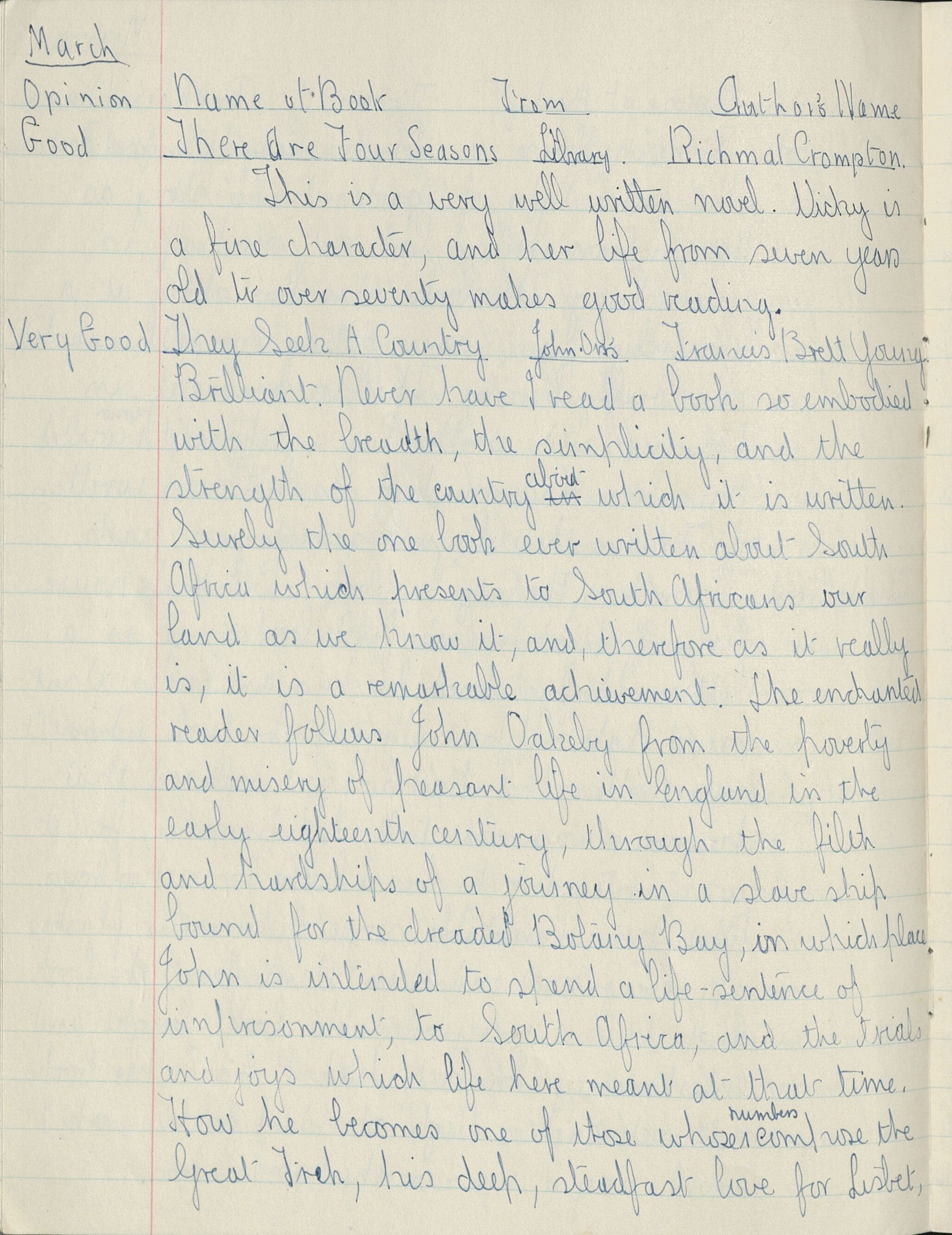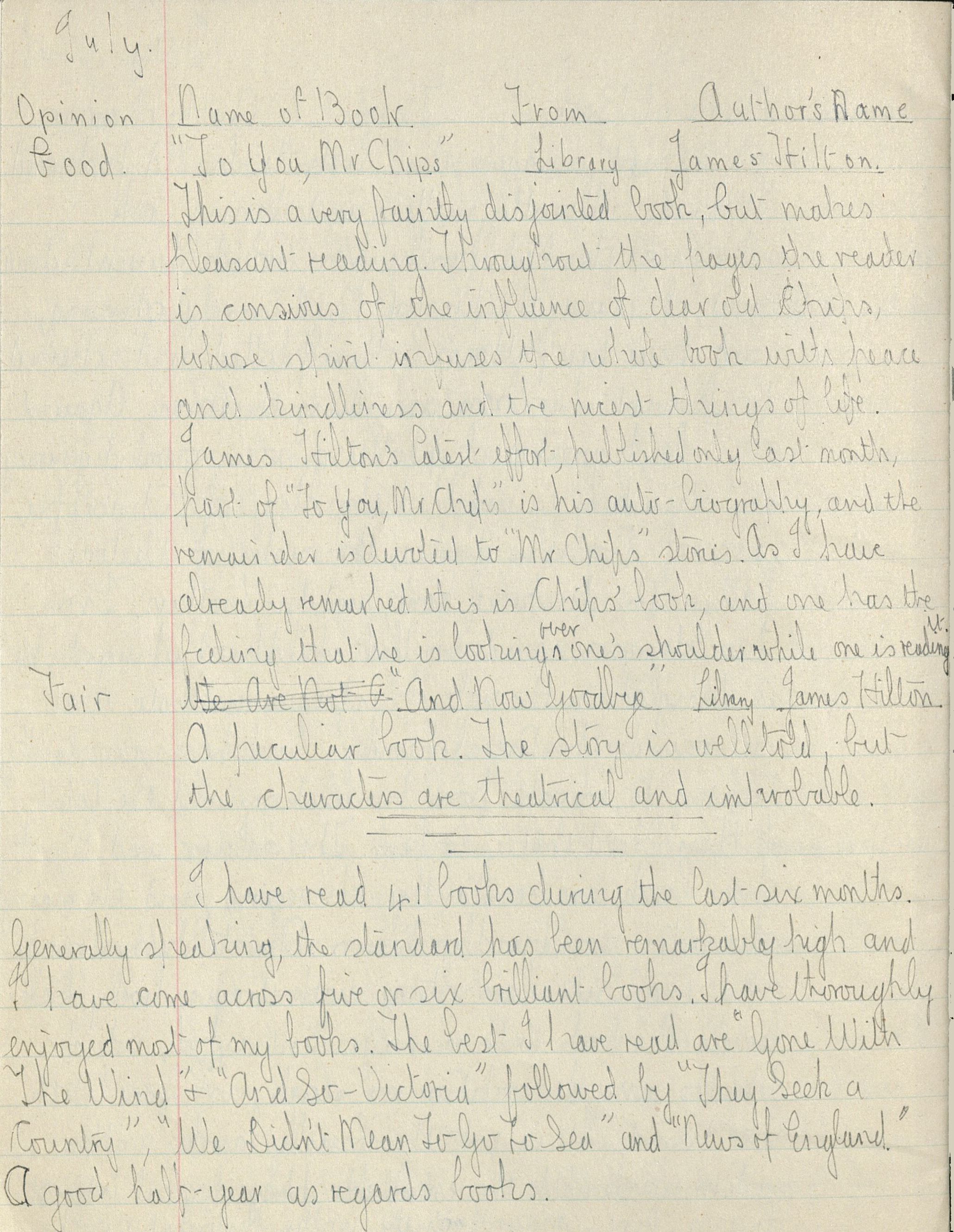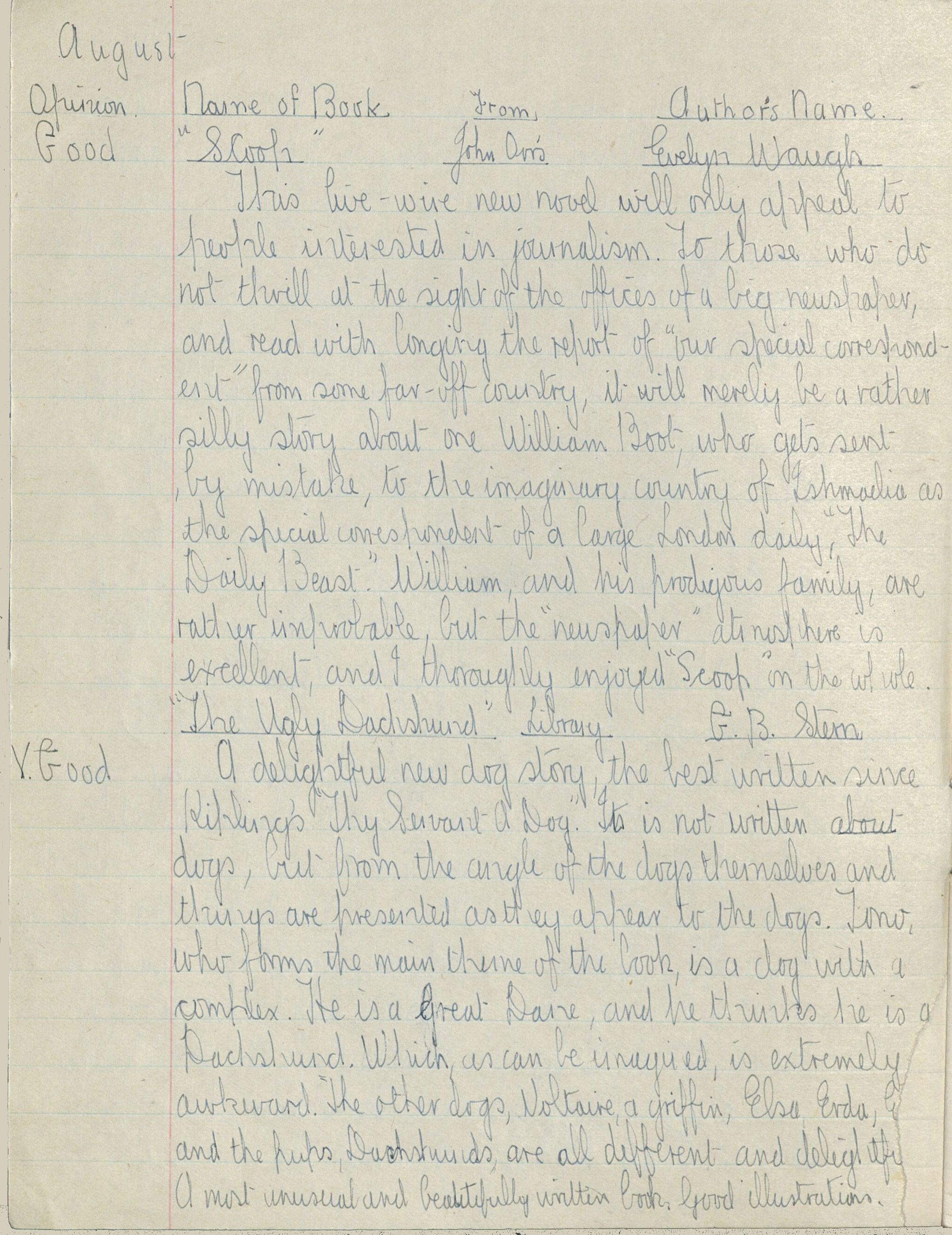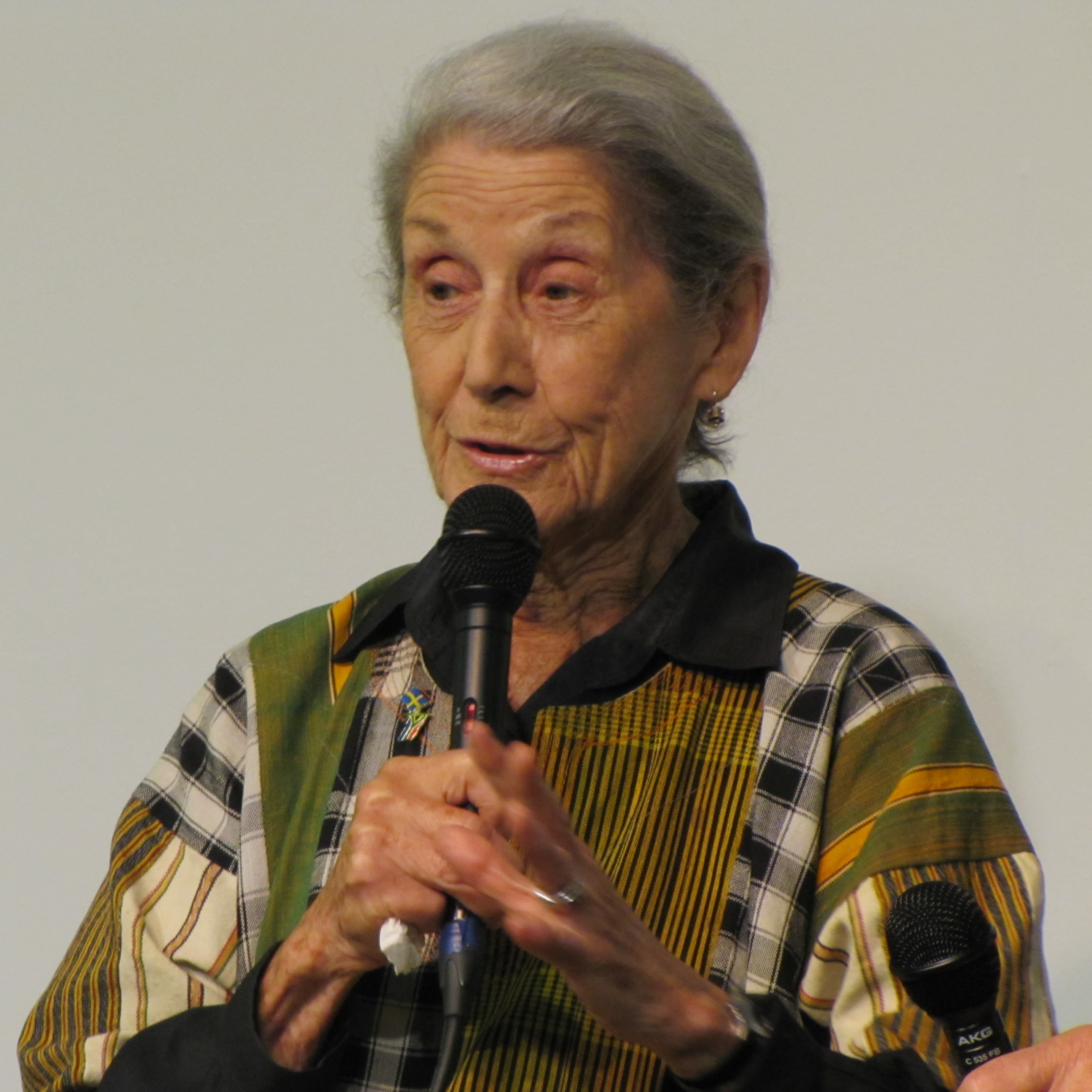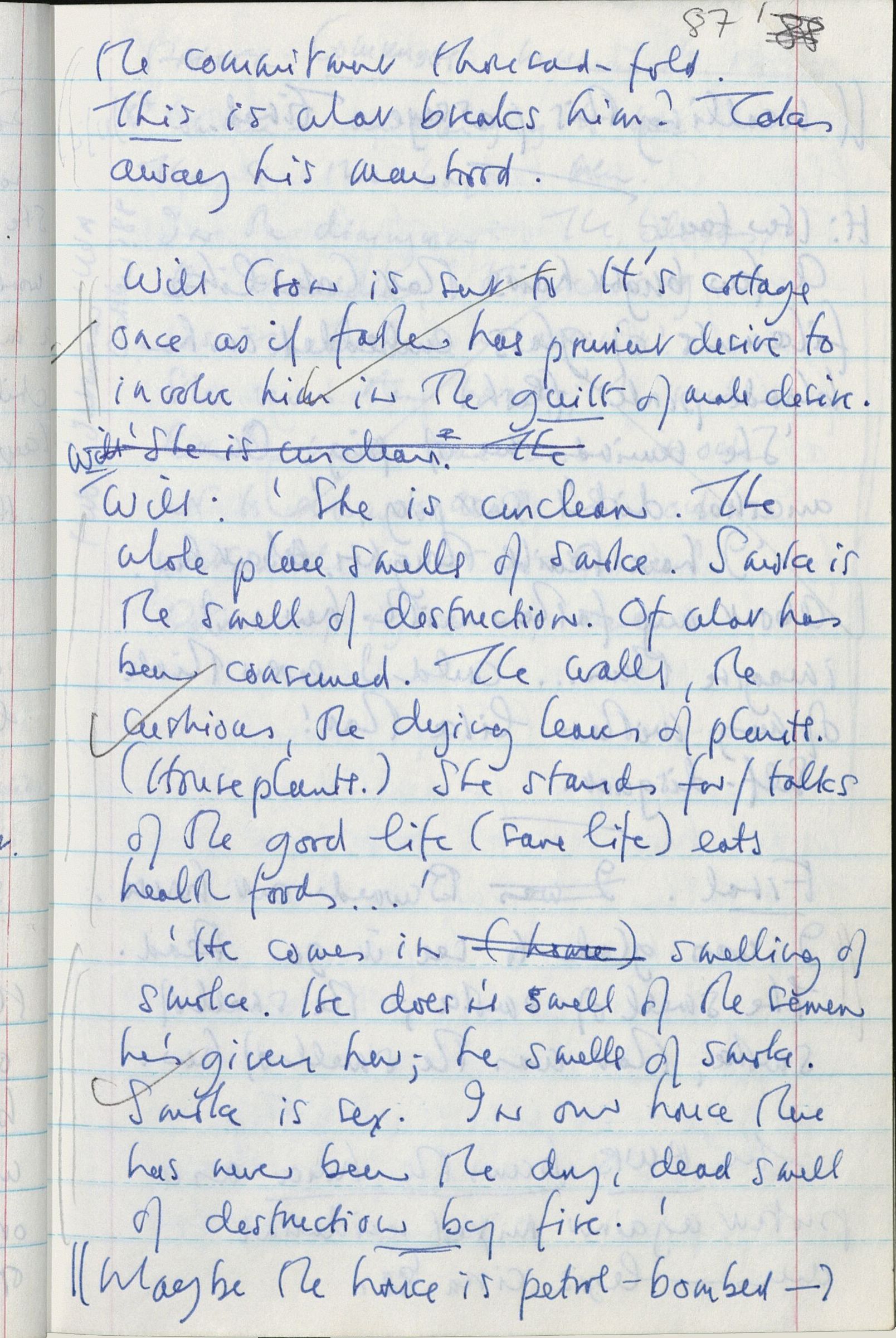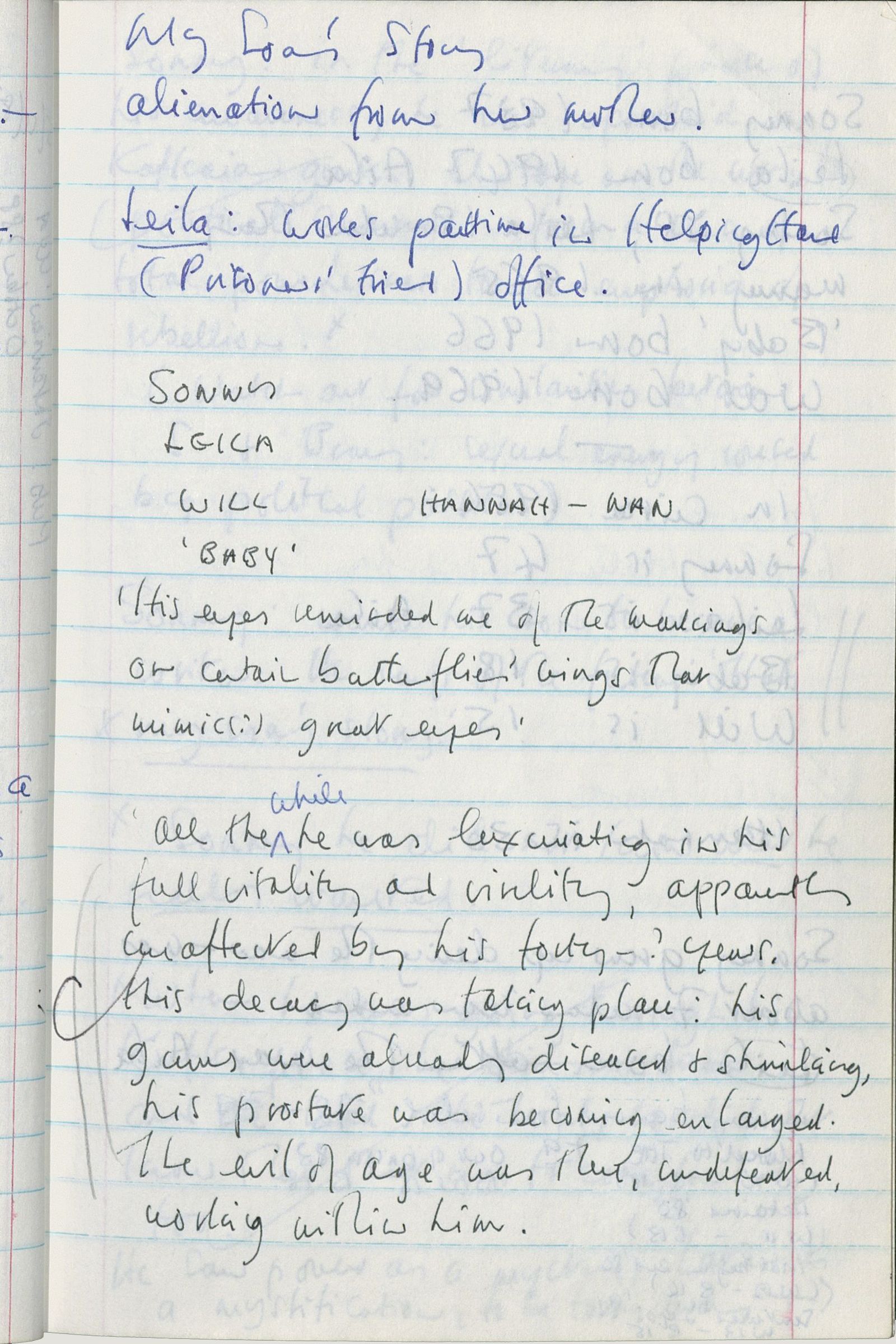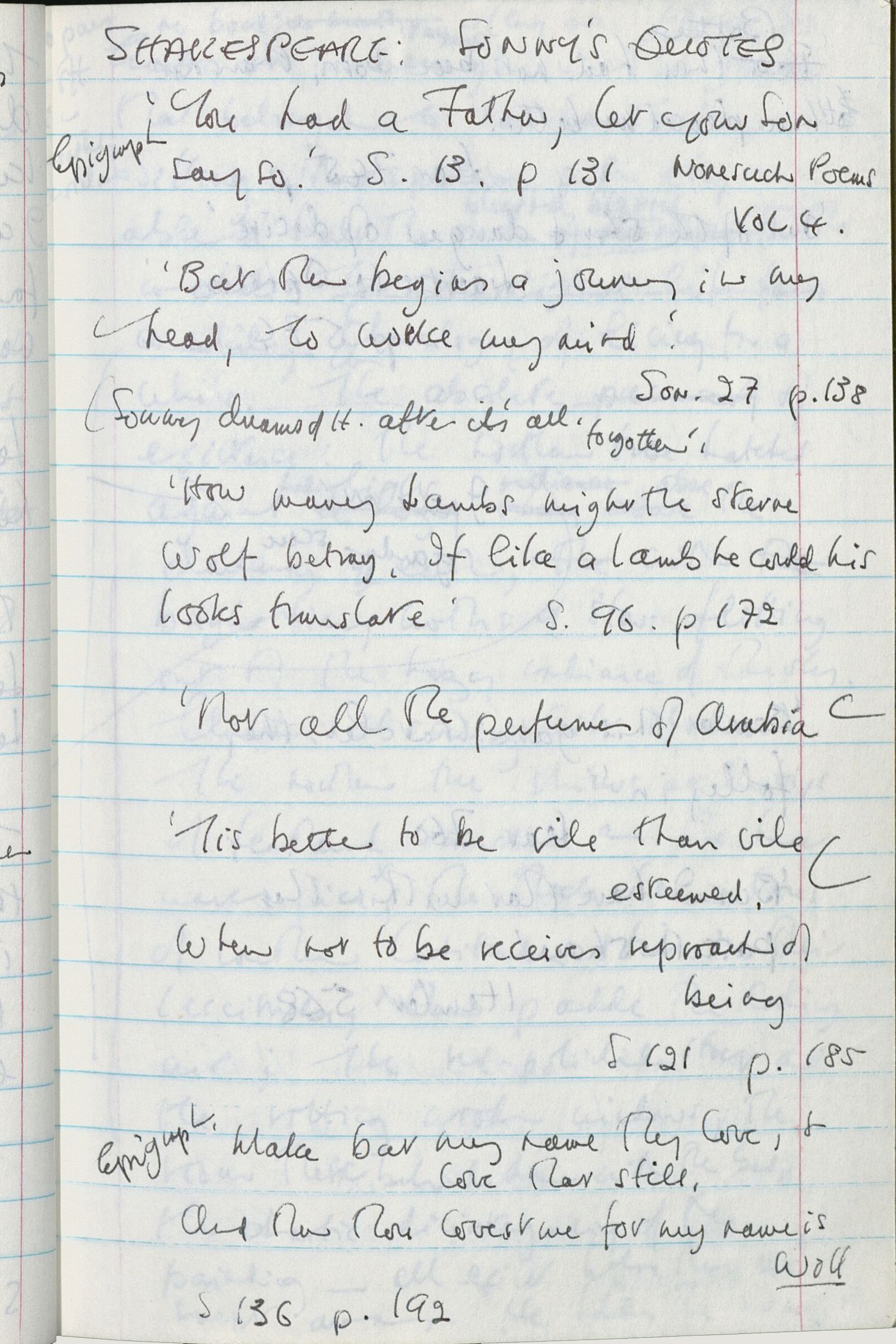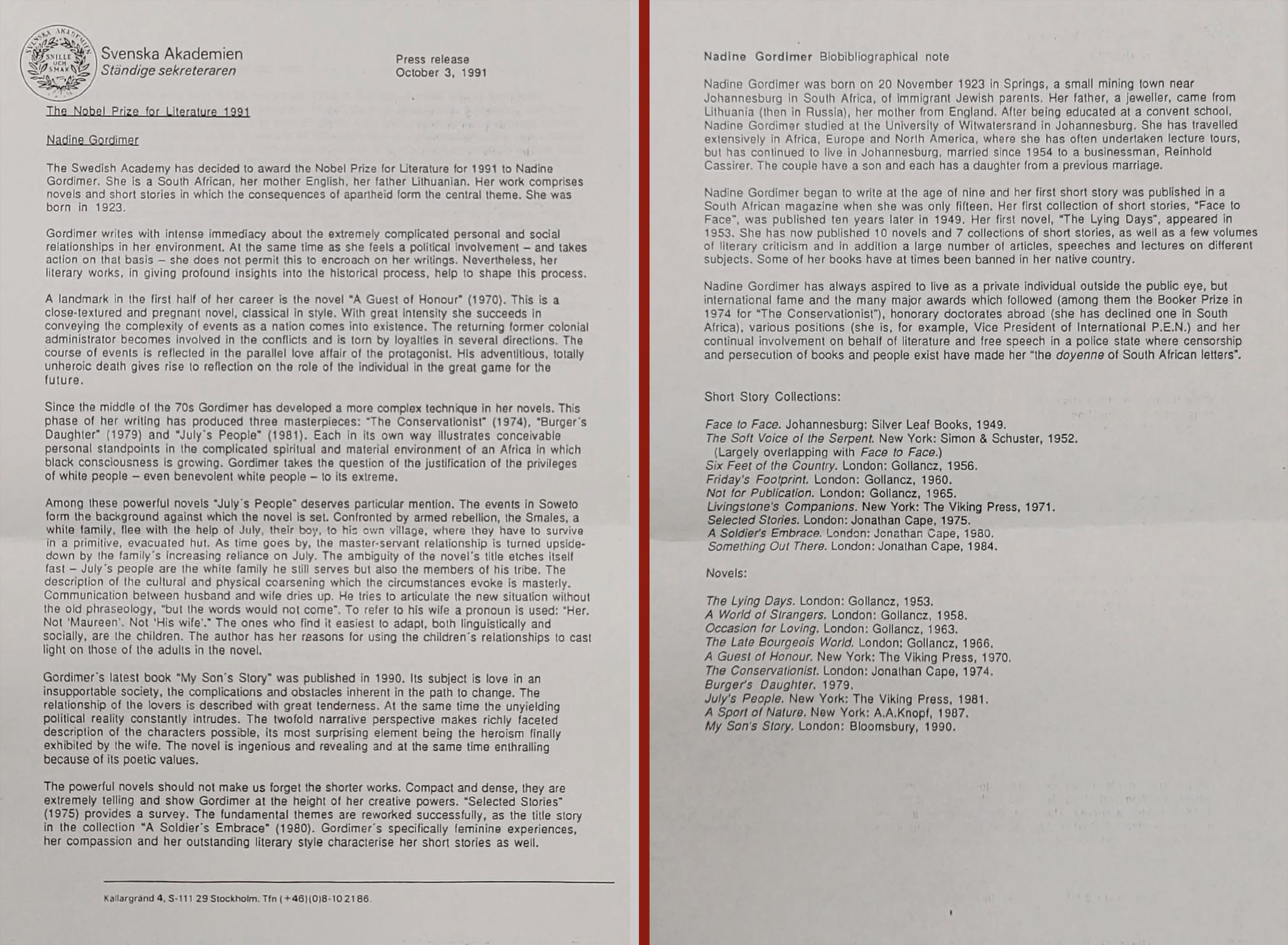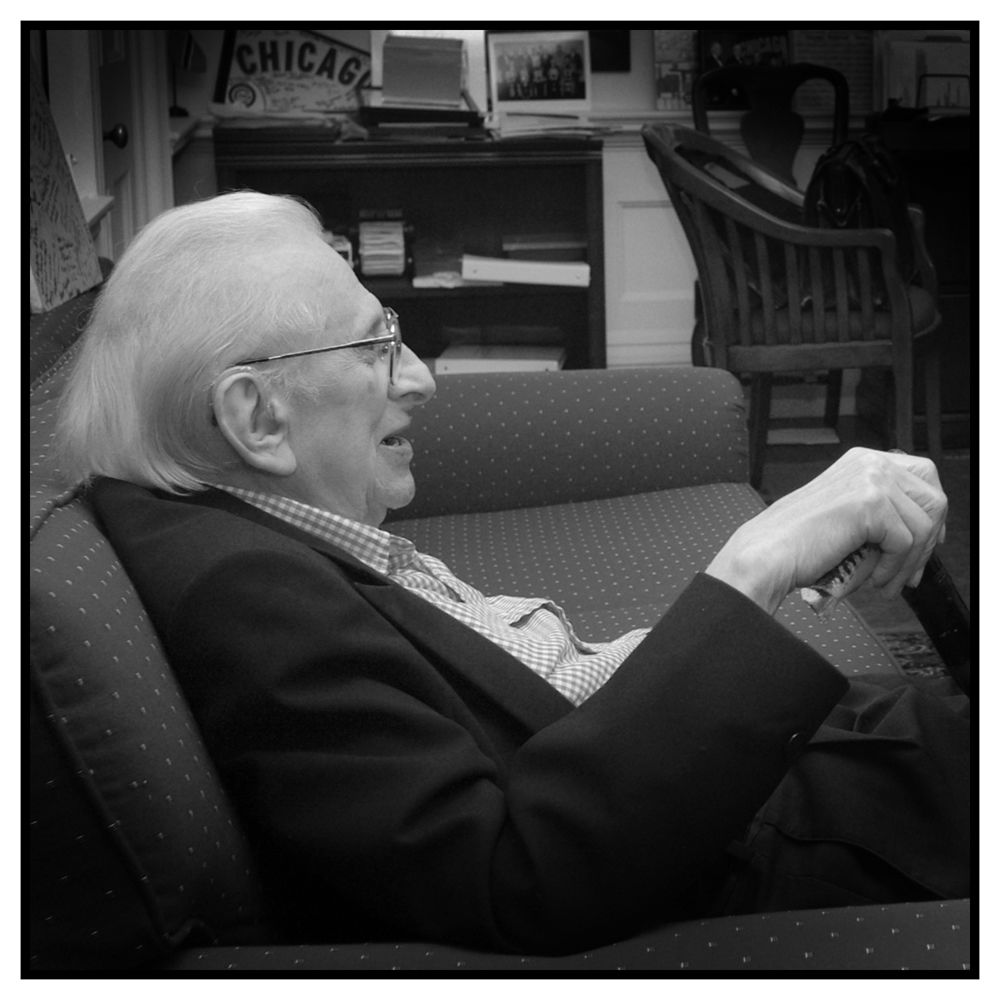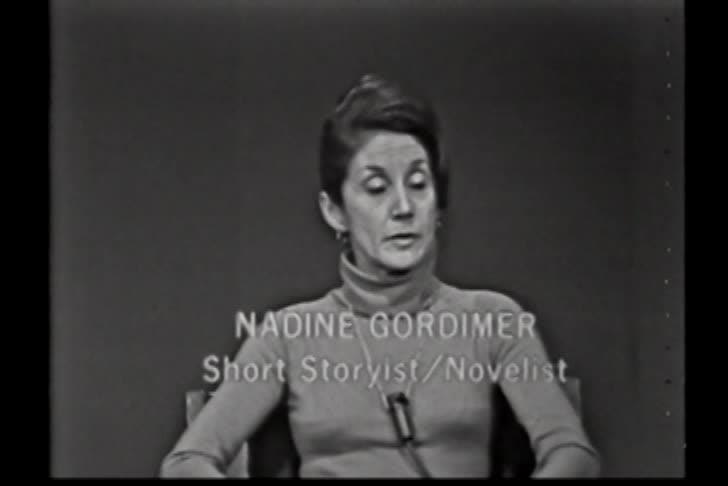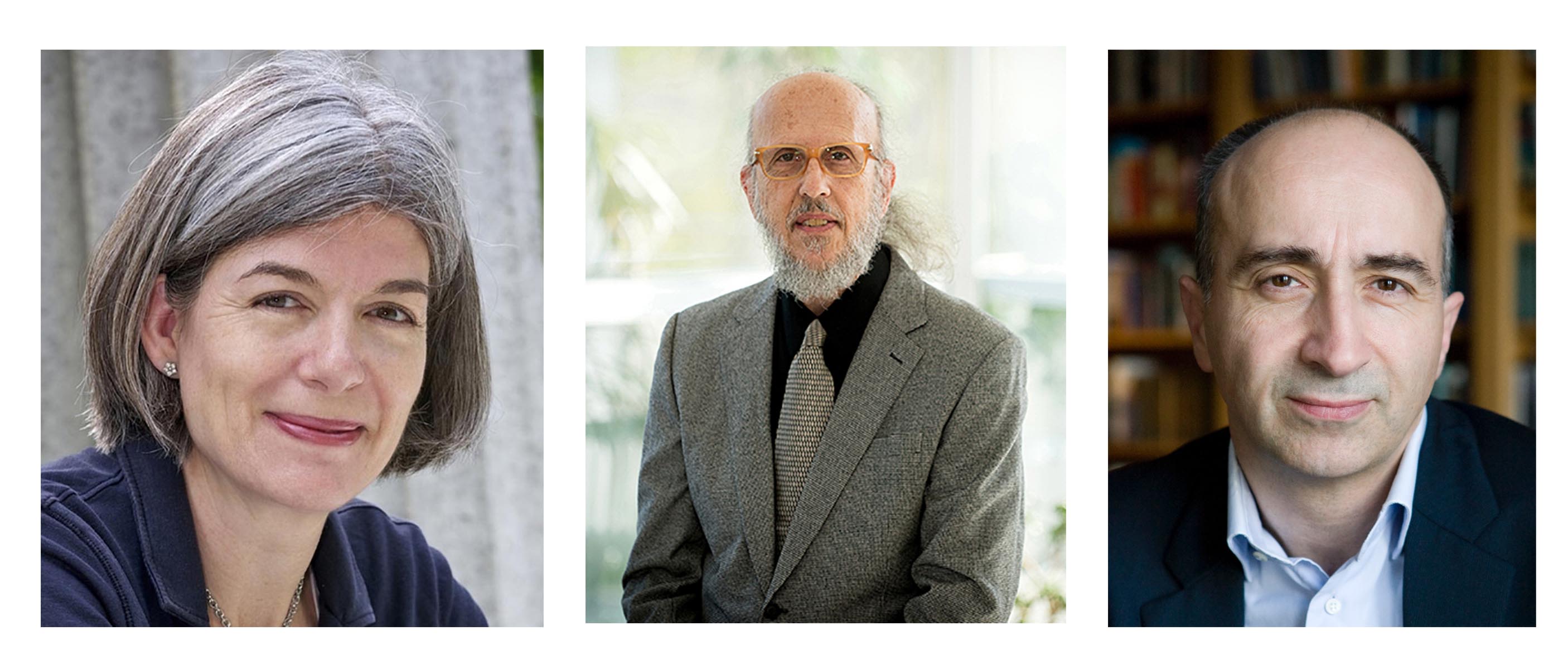NADINE GORDIMER
Part of the Birss 2023 Exhibit:
A Celebration of the Works of Nadine Gordimer
VISIT THE REST OF THE EXHIBIT:
Salmagundi Magazine
Apartheid
John Howard Birss, Jr. Memorial Program
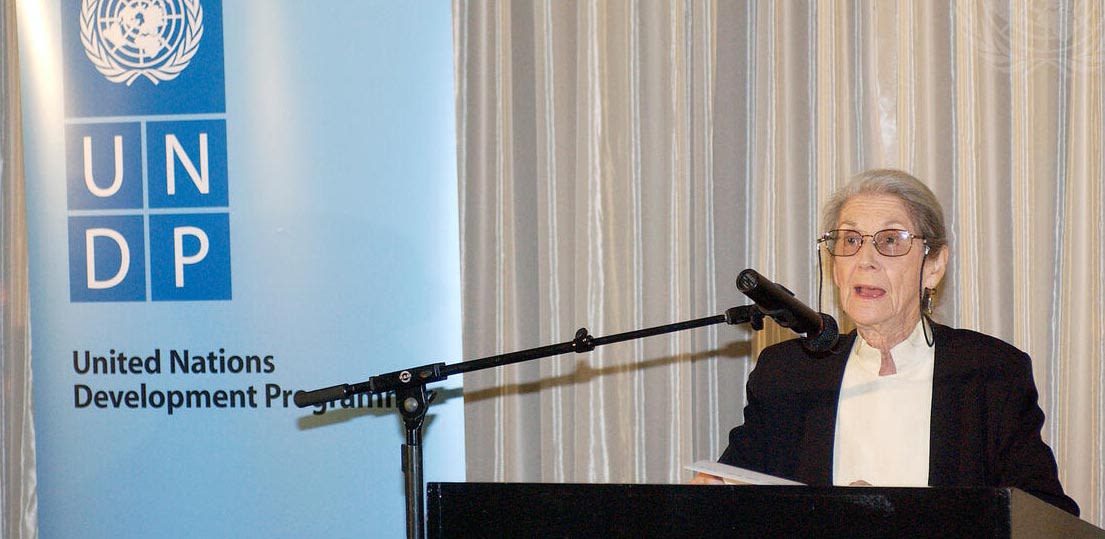
The 23rd Annual John Howard Birss, Jr.
Memorial Program Presents:
“Writing & Political Activism:
The Work of South African Writer
Nadine Gordimer”
celebrating the 100th anniversary of her birth (2023)
Nadine Gordimer, author of 15 novels as well as numerous short stories, nonfiction and other works, was seen as one of the most powerful voices in the apartheid era.
Her writings about moral and racial issues in South Africa, have been published in 40 languages, and earned her numerous honors and awards, including the Booker Prize (1974) and the Nobel Prize for Literature (1990).
In addition to writing, she lectured and taught around the world.

TIMELINE OF GORDIMER'S LIFE & CAREER

A YOUNG WRITER

Gordimer began to write at the age of 9, writing a poem about former South African President Paul Kruger.
"I started writing at nine, because I was surprised by a poem I produced as a school exercise. The subject prescribed was [former South African President] 'Paul Kruger' and although I haven't been asked to produce any juvenilia here, in view of what has happened between people like myself and our country since then, I can't resist quoting for the long-untasted patriotic flavor:
Noble in heart,
Noble in mind,
Never deceitful,
Never unkind..."
Gordimer began keeping a diary in 1934.
Copyright the Estate of Nadine Gordimer. Source: "Diary, 1934," Gordimer mss., Lilly Library, Indiana University, Bloomington, Indiana.
Copyright the Estate of Nadine Gordimer. Source: "Diary, 1934," Gordimer mss., Lilly Library, Indiana University, Bloomington, Indiana.
Beginning in 1937, Gordimer's children's stories first appeared in Johannesburg's Sunday Express and The Forum. She continued to published short stories in South Africa, but it wasn't until the 1950s that her stories appeared in American magazines. The Yale Review published "The Hour and the Years" in 1950 and the following summer the Virginia Quarterly Review published “The Catch” and The New Yorker published “A Watcher of the Dead".
"BOOKS READ IN 1938"
Gordimer won an essay competition as a child and purchased two books with the prize -- Gone with the Wind and The Diary of Samuel Pepys' Diary. She recorded her personal reflections about these two books and others in her reading notebook.
Click on any image to open up a slide show with larger images of these four pages from her notebook. .

Copyright the Estate of Nadine Gordimer. Source: "Books read in 1938," Gordimer mss., Lilly Library, Indiana University, Bloomington, Indiana.
Copyright the Estate of Nadine Gordimer. Source: "Books read in 1938," Gordimer mss., Lilly Library, Indiana University, Bloomington, Indiana.
Copyright the Estate of Nadine Gordimer. Source: "Books read in 1938," Gordimer mss., Lilly Library, Indiana University, Bloomington, Indiana.
Copyright the Estate of Nadine Gordimer. Source: "Books read in 1938," Gordimer mss., Lilly Library, Indiana University, Bloomington, Indiana.
Copyright the Estate of Nadine Gordimer. Source: "Books read in 1938," Gordimer mss., Lilly Library, Indiana University, Bloomington, Indiana.
Copyright the Estate of Nadine Gordimer. Source: "Books read in 1938," Gordimer mss., Lilly Library, Indiana University, Bloomington, Indiana.
Copyright the Estate of Nadine Gordimer. Source: "Books read in 1938," Gordimer mss., Lilly Library, Indiana University, Bloomington, Indiana.
Copyright the Estate of Nadine Gordimer. Source: "Books read in 1938," Gordimer mss., Lilly Library, Indiana University, Bloomington, Indiana.
Press Conference on the new book Telling Tales, a collection of short stories published for the benefit of HIV/AIDS victims in Southern Africa. UN Photo/Evan Schneider
Press Conference on the new book Telling Tales, a collection of short stories published for the benefit of HIV/AIDS victims in Southern Africa. UN Photo/Evan Schneider
“Your whole life you are really writing one book, which is an attempt to grasp the consciousness of your time and place –
a single book written from different
stages of your ability.”
MY SON'S STORY:
Gordimer's notes
Click on any image to open up a slide show with larger images of these six pages from her notebook. .

Copyright the Estate of Nadine Gordimer. Source: "Notebook, 1986 - 1990," Gordimer mss., Lilly Library, Indiana University, Bloomington, Indiana.
Copyright the Estate of Nadine Gordimer. Source: "Notebook, 1986 - 1990," Gordimer mss., Lilly Library, Indiana University, Bloomington, Indiana.
Copyright the Estate of Nadine Gordimer. Source: "Notebook, 1986 - 1990," Gordimer mss., Lilly Library, Indiana University, Bloomington, Indiana.
Copyright the Estate of Nadine Gordimer. Source: "Notebook, 1986 - 1990," Gordimer mss., Lilly Library, Indiana University, Bloomington, Indiana.
Copyright the Estate of Nadine Gordimer. Source: "Notebook, 1986 - 1990," Gordimer mss., Lilly Library, Indiana University, Bloomington, Indiana.
Copyright the Estate of Nadine Gordimer. Source: "Notebook, 1986 - 1990," Gordimer mss., Lilly Library, Indiana University, Bloomington, Indiana.
Copyright the Estate of Nadine Gordimer. Source: "Notebook, 1986 - 1990," Gordimer mss., Lilly Library, Indiana University, Bloomington, Indiana.
Copyright the Estate of Nadine Gordimer. Source: "Notebook, 1986 - 1990," Gordimer mss., Lilly Library, Indiana University, Bloomington, Indiana.
Copyright the Estate of Nadine Gordimer. Source: "Notebook, 1986 - 1990," Gordimer mss., Lilly Library, Indiana University, Bloomington, Indiana.
Copyright the Estate of Nadine Gordimer. Source: "Notebook, 1986 - 1990," Gordimer mss., Lilly Library, Indiana University, Bloomington, Indiana.
Copyright the Estate of Nadine Gordimer. Source: "Notebook, 1986 - 1990," Gordimer mss., Lilly Library, Indiana University, Bloomington, Indiana.
Copyright the Estate of Nadine Gordimer. Source: "Notebook, 1986 - 1990," Gordimer mss., Lilly Library, Indiana University, Bloomington, Indiana.
GORDIMER'S NOVELS

Lying Days (Simon and Schuster, 1953) is a fictional account of Gordimer's upbringing as a young white girl in South Africa and the rise of the opposing nationalist tendencies between the Afrikaner and African people.
A World of Strangers (Simon and Schuster, 1958) is written in response to Gordimer's sudden insight, after moving to Johannesburg, into the two worlds created by apartheid: the white exclusivity that defined it and the vibrant, multiculturalism that was set to counter it.
Occasion for Loving (Viking, 1963) is Gordimer's first novel that takes on a specific, microscopic, and non-black-and-white scenario brokered by the general oppression of apartheid; a biracial love that becomes distorted and forbidden because of its illegality under the laws of apartheid.
The Late Bourgeois World (Viking, 1966) addresses the extreme socio-political situation in South Africa during apartheid, particularly doing so through the character of Max, a hero who goes to extreme measures to contribute, even if it be with a small bomb, to attempt to break his country free from apartheid's shackles.
A Guest of Honour (Viking, 1970) is Gordimer's first novel with a setting outside of South Africa. Taking place in an unknown fictional country, it focuses upon the issue of what the role of the white population will be in the coming future for Africa as a whole. The following year, the book garners Gordimer The James Tait Black Memorial Prize – one of Britain’s oldest literary awards.
The Conservationist (Jonathan Cape, 1974) follows the tale of a rich Afrikaner named Mehring. Because of his inability to shift with the changing moods of South Africa's liberal frontier, he loses touch with not just society, but with his family and his workers, thus leading him down a path of ruin.
Burger's Daughter (Viking, 1979) was banned one month after it was published. The book follows the story of a young girl, Rosa Burger, put in the crossroads of many of the different movements occurring in South Africa at the time, all of them varying in their levels of political extremism, but each of them impacting her family life, her private sphere, in one way or another. It is considered by many to be her magnum opus.
July's People (1981) places South Africa in the future, with Gordimer predicting, through fictional means, how she believes Apartheid will reach a climatic point: through violent revolution and mass white exodus, exemplified by the journey that the Smales family must take to escape the conflict in Johannesburg with their black servant, July.
A Sport of Nature (Knopf, 1987) receives the Anisfield-Wolf Book Award. Like July's People, the book follows the story of a young girl, Hillela, who fell into a chasm of revolution, and Gordimer predicts, once more, South Africa's future as one that would be filled with violence.
My Son's Story (Farrar, Straus & Giroux, 1990) is Gordimer's last novel to be set during apartheid, and it is also the last written during the period. It follows the story of a young boy who witnesses his family crumble as his sister and mother become a part of an extremist, militant faction to the anti-apartheid movement. Meanwhile, his advocate father falls in love with a white advocate, which takes him away from his family. Gordimer illustrates in the novel how apartheid and white people do not just affect a society, but families within that society, breaking them apart at the seams.
None to Accompany Me (Farrar, Straus and Giroux 1994) is Gordimer's first novel published and set in post-apartheid South Africa, focusing on the messes that apartheid had left behind, both in the terms of what is now the law and what land is owed to black South Africans.
The House Gun (Farrar, Straus & Giroux, 1998) details, much like None to Accompany Me, the aftermath of apartheid’s end and how the roles in society between races are beginning to change. In the novel, Duncan, a white man, is put on trial for murder, and his defense is now in the hands of a black lawyer. In the previous time, it would have been the black man’s life resting in the hands of the white lawyer, but Gordimer shows how that has now changed with Apartheid’s end.
The Pickup (Farrar, Straus & Giroux 2001) is set in an unnamed fictional country in Africa, following the tale of an illegal immigrant who then takes back, after being exported, a young, rich girl who experiences for the first time what an unprivileged, immigrant life is like, but she also comes to love this new country that she finds herself in.
Get a Life (Farrar, Straus & Giroux, 2005) is a novel that focuses on a dichotomy between two marriages, one marriage being between the mother and father, and the other marriage being between their son and daughter-in-law. Its theme centers around one not of race, but of ecology and the environment, especially as the son becomes sick from thyroid cancer and he begins to fall in love with a natural, foreign world outside of South Africa.
No Time Like the Present (Farrar, Straus & Giroux, 2012) is Gordimer's last work, and it is one that attempts to paint the veterans of anti-apartheid still in a struggle with themselves, their trauma, and how to move along in a post-apartheid world. Although Gordimer, ultimately, paints them as being in a better place because of their success in changing society, despite the trauma that came with it.
Summaries by Ben Harvey and Allison Rivard (RWU Class of 2025)
LITERARY AWARDS

1961: W.H. Smith Commonwealth Literary Award
for Friday’s Footprint
1971: James Tait Black Memorial Prize (Britain)
for A Guest of Honour
1974: Central News Agency Literary Award (South Africa) for The Conservationist
1974: Booker Prize for The Conservationist
1979: Central News Agency Literary Award (South Africa) for Burger’s Daughter
1981: Central News Agency Literary Award (South Africa) for July’s People
1985: Premio Malaparte (Italy)
1985: Nelly Sachs Prize (Germany)
1986: Brockport Writer's Forum International Award (United States)
1987: Bennett Award (United States)
1988: Anisfield-Wolf Book Award (United States)
for A Sport of Nature
1990: Central News Agency Literary Award (South Africa) for My Son’s Story
1991: Nobel Prize for Literature
1996: Botev Prize (Bulgaria)
2012: Mbokodo Awards (South Africa)
INTERVIEWS WITH GORDIMER

Brockport Writer’s Forum:
with Peter Marchant
February 22, 1972:
Gordimer discusses her writing .
Gordimer received the 1986 Writers Forum International Award for her significant and sustained achievement in enhancing understanding between cultures, while maintaining the highest standards of literary art.
Virtual Keynote with
Claire Messud, Robert Boyers, & James Wood
“Writing & Political Activism:
The Work of South African Writer Nadine Gordimer”
We'd like to thank our project partners:
The Honors Program at Roger Williams University
The Lilly Library at Indiana University, Bloomington
Salmagundi magazine at Skidmore College



